
Students will examine the choices people make regarding the use of water.
- Subject:
- Earth Science
- Science
- Material Type:
- Lesson Plan
- Provider:
- Foundation for Teaching Economics
- Author:
- Foundations for Teaching Economics
- Date Added:
- 02/26/2019

Students will examine the choices people make regarding the use of water.
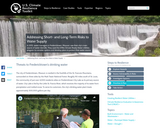
In 2012, water managers in Fredericktown, Missouri, saw their city's main source of water dwindle. They used the EPAs Climate Ready Water Utilities program to consider options and develop plans to protect their water source.

Students will explore how human population growth, air pollution, agriculture, mining, water use, and other human activities have impacted the environment and the mark they will leave in the fossil record.
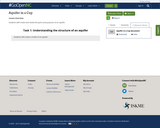
Students willl create and review the parts and purposes of an aquifer.

This online article describes aquifers as a source of freshwater located below the surface of the earth. The movement of water into and out of aquifers is also discussed.
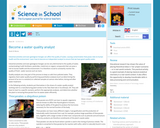
In this lesson, students take on the role of a quality analyst from a small independent quality control firm that checks results to ensure that they meet the requirements of the UK Environment Agency. The test involves adding an acidic solution of iron(III) chloride to the water sample and measuring the concentration of thiocyanate photometrically by measuring the absorbance due to the iron(III) thiocyanate complex.
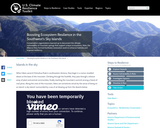
Conservation organizations teamed up to document the climate vulnerability of mountain springs that support unique ecosystems. Now, the Alliance they formed facilitates restoration work to enhance habitats and improve resiliency.

This experiment illustrates the basic properties of a watershed: how water flows from higher elevations to lower elevations, and how watersheds are interconnected. The students will understand how the placement of buildings, roads, and parking lots can be important to watershed runoff, and how careless use and disposal of harmful contaminants can have a serious effect on downstream watershed denizens.

Students will be able to:ASK questions that arise from careful observation of phenomena, or unexpected results, to clarify and/or seek additional information.ASK questions that arise from examining models or a theory, to clarify and/or seek additional information and relationships.ASK questions to determine relationships, including quantitative relationships, between independent and dependent variables.
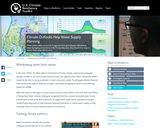
When water utility personnel recognized their groundwater withdrawals were damaging ecosystems in the Tampa Bay area, they found new ways to reduce their dependence on it.
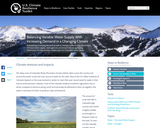
Anticipating increasing demand as well as changes in the timing and amount of future water supply, state agencies and researchers are gathering information to help decision makers plan for Colorado's water future.

Explore water pollution and its impact on ocean life in aquatic dead zones.
GeoInquiries are designed to be fast and easy-to-use instructional resources that incorporate advanced web mapping technology. Each 15-minute activity in a collection is intended to be presented by the instructor from a single computer/projector classroom arrangement. No installation, fees, or logins are necessary to use these materials and software.

Explore the impact of human activities on water resources.
GeoInquiries are designed to be fast and easy-to-use instructional resources that incorporate advanced web mapping technology. Each 15-minute activity in a collection is intended to be presented by the instructor from a single computer/projector classroom arrangement. No installation, fees, or logins are necessary to use these materials and software.

Students will create a 30-60 second podcast informing the public on a water quality/water usage issue in North Carolina.
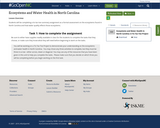
Students will be completing a tic-tac-toe summary assignment as a formal assessment on the ecosystems found in North Carolina and how water quality effects those ecosystems.
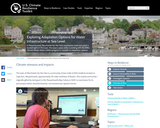
In Massachusetts, Manchester-by-the-Sea's wastewater treatment plant is located right on the coast. The town's water utility is working with the EPA's Climate Ready Water Utilities program to consider its adaptation options.

In this two-day lesson, students will be introduced to several water sustainability issues, including access to clean freshwater, groundwater depletion, agricultural water use, and water waste.

In this lesson, students participate in a kinesthetic simulation to illustrate how nutrient pollution from agricultural runoff can lead to a dead zone at the mouth of a drainage basin.
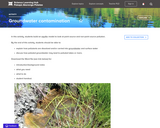
Students build an aquifer model to look at point source and non-point source pollution.

Students will learn about water use and conservation in the industrialized world through a variety of resources. They will also calculate water usage and water waste through drips and leaks.